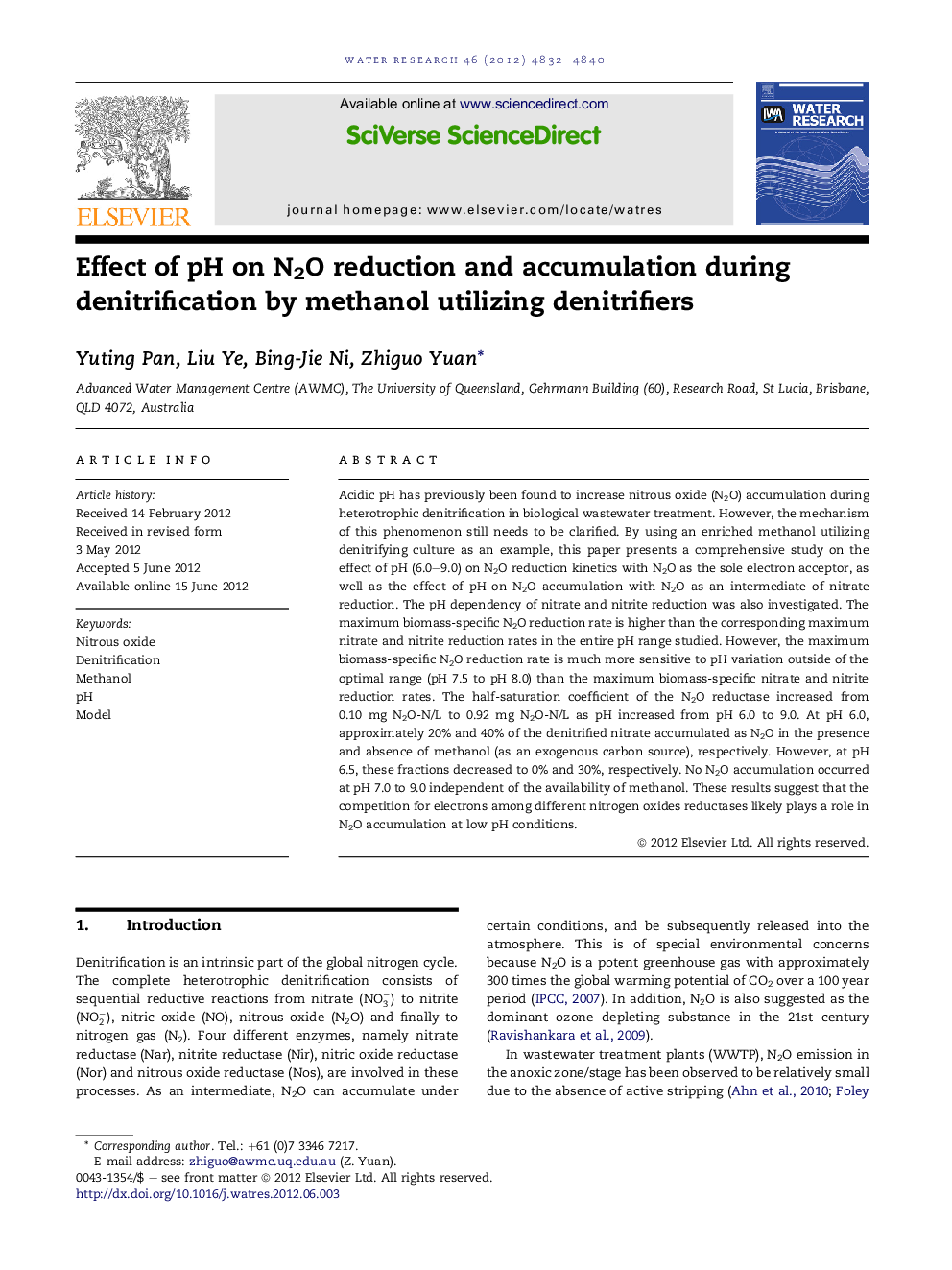| کد مقاله | کد نشریه | سال انتشار | مقاله انگلیسی | نسخه تمام متن |
|---|---|---|---|---|
| 4483003 | 1316875 | 2012 | 9 صفحه PDF | دانلود رایگان |

Acidic pH has previously been found to increase nitrous oxide (N2O) accumulation during heterotrophic denitrification in biological wastewater treatment. However, the mechanism of this phenomenon still needs to be clarified. By using an enriched methanol utilizing denitrifying culture as an example, this paper presents a comprehensive study on the effect of pH (6.0–9.0) on N2O reduction kinetics with N2O as the sole electron acceptor, as well as the effect of pH on N2O accumulation with N2O as an intermediate of nitrate reduction. The pH dependency of nitrate and nitrite reduction was also investigated. The maximum biomass-specific N2O reduction rate is higher than the corresponding maximum nitrate and nitrite reduction rates in the entire pH range studied. However, the maximum biomass-specific N2O reduction rate is much more sensitive to pH variation outside of the optimal range (pH 7.5 to pH 8.0) than the maximum biomass-specific nitrate and nitrite reduction rates. The half-saturation coefficient of the N2O reductase increased from 0.10 mg N2O-N/L to 0.92 mg N2O-N/L as pH increased from pH 6.0 to 9.0. At pH 6.0, approximately 20% and 40% of the denitrified nitrate accumulated as N2O in the presence and absence of methanol (as an exogenous carbon source), respectively. However, at pH 6.5, these fractions decreased to 0% and 30%, respectively. No N2O accumulation occurred at pH 7.0 to 9.0 independent of the availability of methanol. These results suggest that the competition for electrons among different nitrogen oxides reductases likely plays a role in N2O accumulation at low pH conditions.
Figure optionsDownload high-quality image (184 K)Download as PowerPoint slideHighlights
► A low pH (6.0–7.0) reduces the maximum biomass-specific N2O reduction rate.
► The affinity of N2O reductase with respect to N2O decreases as pH increases.
► Electron competition might contribute to N2O accumulation at low pH.
Journal: Water Research - Volume 46, Issue 15, 1 October 2012, Pages 4832–4840